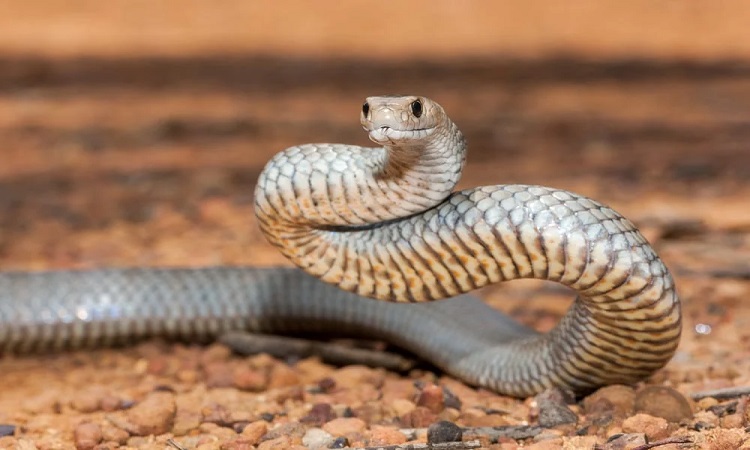The venom of the tiger snake and the brown snake makes these two species among the most dangerous in Australia. As part of a study, scientists recently analyzed their genome with the aim of finding out more about their origin.
Presentation of the two species
The tiger snake (Notechis scutatus) is usually orange-yellow with green stripes, but can also be solid green or shiny black with metallic blue highlights. With a length generally between 1 and 1.8 m, the tiger snake is very venomous. It is an endemic species of Australia that can be found in various places in the country.
The eastern brown snake (Pseudonaja textilis) is, as its name suggests, a solid brown color. Often smaller than the tiger snake, it is on the other hand much more venomous. It is quite simply the second most venomous land snake in the world and the most deadly in Australia after the famous Desert Taipan (Oxyuranus microlepidotus). The brown snake is therefore mainly found in Australia with, however, also a presence in a few isolated places on the island of New Guinea, shared between Indonesia and Papua New Guinea.
These two species of snake are part of the family Elapidae (Elapidae). This has the particularity of counting both land and sea snake species.
The presence of “jumping genes” in these snakes
A study conducted by the University of Adelaide (Australia) and the South Australian Museum looked at the genome of the tiger snake and the brown snake. Published in the journal Genes on January 25, 2022, this work aimed to better understand their origin, but also to compare these genomes with those of sea and semi-sea snakes of the Elapidae family. The researchers explained that the origin of the Australian elapids is currently still the subject of debate. Some experts believe that their ancestors arrived by land and others think of a marine or semi-marine ancestor.
“During our research, we found a number of genes that were present in the ancestor of all Australian elapids, but could not be traced to a snake ancestor. Instead, they could be attributed to similar transposable gene sequences found in marine life, including fish, sea squirts, sea urchins, bivalves and turtles. This indicates that the marine environment transferred the new genetic material into the snakes and offers new support for the argument that the first Australian elapids swam to our shores. They must have previously acquired the new genetic material during an ancestral period when they adapted to marine life,” explain the authors of the study.
The researchers discovered no less than fourteen distinct transfer events involving other marine organisms that received new genetic material. In addition, eight genes are only present in the genome of marine and semimarine sea snakes. According to the scientists, it is a question of “jumping genes” and this is the very first time that these genes can explain the evolutionary history of an animal species. This study has thus made it possible to demonstrate that the common ancestor of all elapids succeeded in adapting to a marine environment. It may even have made it easier for snakes to transition from land to sea.




